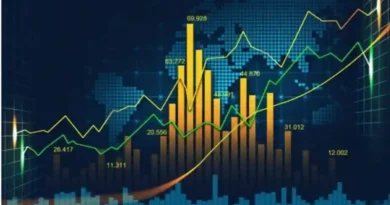Leveraging Machine Learning for Adaptive Forex Robot Strategies
The Forex (foreign exchange) market is characterized by its dynamic and ever-changing nature, influenced by a myriad of factors including economic indicators, geopolitical events, and market sentiment. In recent years, advancements in machine learning (ML) technology have revolutionized the way traders approach currency trading, offering new opportunities to extract insights from data and develop adaptive trading strategies. This article explores the application of machine learning techniques in designing adaptive Forex robot strategies, automated systems that execute trades based on predefined rules and algorithms. Through a comprehensive analysis of ML methodologies, model architectures, and their implications for Forex trading, this article aims to elucidate the transformative potential of ML in optimizing trading strategies and achieving consistent returns in the Forex market.
Machine learning has emerged as a powerful tool for extracting actionable insights from complex and high-dimensional data, offering new avenues for traders to analyze market dynamics and develop adaptive trading strategies. In the context of Forex trading, where market conditions can change rapidly and unpredictably, the ability to adapt to changing environments is paramount for achieving consistent returns. Forex robot strategies that leverage machine learning techniques can dynamically adjust to evolving market conditions, capitalize on trading opportunities, and mitigate risk.
Machine Learning Techniques for Forex Trading:
Machine learning encompasses a broad range of techniques and methodologies for pattern recognition, predictive modeling, and decision-making. In the context of Forex trading, machine learning algorithms can be applied to various tasks, including pattern recognition, time series forecasting, sentiment analysis, and risk management.
One common approach to machine learning in Forex trading is supervised learning, where algorithms are trained on historical data to predict future price movements or generate trading signals. Supervised learning algorithms such as decision trees, support vector machines (SVM), and neural networks can learn complex patterns and relationships from data and make informed trading decisions based on historical patterns.
Another approach is unsupervised learning, where algorithms identify patterns and structures in data without the need for labeled examples. Unsupervised learning techniques such as clustering and dimensionality reduction can be used to uncover hidden patterns in market data, identify regime changes, or segment market participants based on behavior.
Reinforcement learning, a subset of machine learning, is also gaining traction in Forex trading. Reinforcement learning algorithms learn through trial and error, receiving feedback from the environment based on their actions. In the context of Forex robot trading, reinforcement learning algorithms can learn optimal trading strategies by interacting with simulated or historical market data, adapting to changing market conditions over time.
Model Architectures for Adaptive Forex Robot Strategies:
The choice of model architecture is critical in designing adaptive Forex robot strategies that can learn and evolve over time. Convolutional neural networks (CNNs), recurrent neural networks (RNNs), and deep reinforcement learning architectures have shown promise in capturing complex patterns and dynamics in market data.
CNNs are well-suited for image and pattern recognition tasks and have been successfully applied to analyzing price charts and identifying technical patterns in Forex trading. By extracting features from price data and identifying patterns indicative of market trends or reversals, CNN-based models can generate trading signals with high accuracy.
RNNs, on the other hand, are designed to capture sequential dependencies and temporal dynamics in time series data. In Forex trading, RNNs can model the temporal relationships between past price movements and future price changes, enabling traders to forecast price movements and make informed trading decisions based on historical data.
Deep reinforcement learning architectures combine the power of deep neural networks with reinforcement learning algorithms to learn optimal trading strategies through interaction with the market environment. By simulating trading scenarios and receiving feedback on their actions, deep reinforcement learning agents can learn adaptive strategies that maximize long-term returns while minimizing risk.
Implications for Forex Trading:
The application of machine learning techniques in Forex trading has far-reaching implications for traders and investors. By leveraging ML algorithms to analyze vast amounts of data and extract actionable insights, traders can make more informed and data-driven trading decisions, reducing reliance on intuition and subjective judgment.
Furthermore, adaptive Forex robot strategies powered by machine learning algorithms can adapt to changing market conditions in real-time, capitalizing on emerging trading opportunities and mitigating risk. ML-based trading systems can continuously learn and evolve, incorporating new information and adapting their strategies to changing market dynamics, thereby enhancing robustness and performance over time.
However, it is essential to acknowledge the challenges and limitations of machine learning in Forex trading. ML algorithms are not immune to overfitting, data biases, and model drift, and must be carefully validated and monitored in live trading environments. Moreover, the success of ML-based trading strategies depends on the quality and relevance of the data used for training, as well as the robustness of the model architecture and algorithm design.
Conclusion:
Machine learning offers unprecedented opportunities for traders to develop adaptive and data-driven Forex robot strategies that can thrive in the dynamic and competitive Forex market. By leveraging ML algorithms to analyze market data, generate trading signals, and adapt to changing market conditions, traders can achieve consistent returns and mitigate risk in the ever-evolving landscape of currency trading.
While challenges remain in implementing and validating ML-based trading strategies, the potential benefits of machine learning for Forex trading make it a valuable tool for traders seeking to gain a competitive edge in the global currency markets. As machine learning technology continues to advance, the future of Forex trading is likely to be increasingly shaped by adaptive and intelligent trading systems that leverage data-driven insights to achieve superior performance and profitability.




